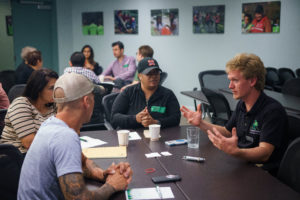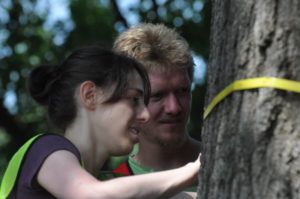THE LEAFLET
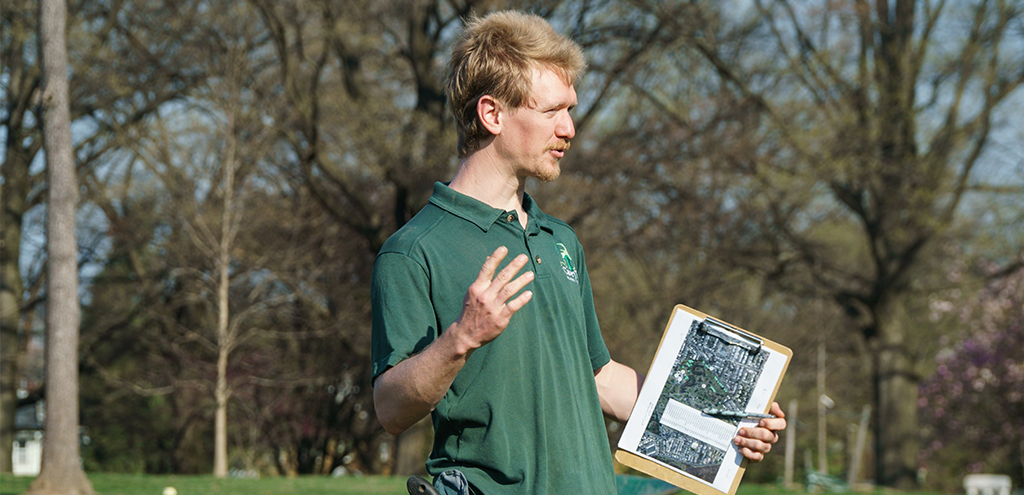
Farewell to Marty Frye, our Urban Forester
Our longtime arborist, Marty Frye, is off on his next adventure! From Residential Plantings to PawPaw trees (and mead!) to Community Tree Plantings, Marty’s dedication and joy for all things trees will be missed. Before he goes, we asked him a few questions – read on to see what has (literally) surprised him while working here.
Casey Trees (CT): Where (or what) will you be moving on to?
Marty Frye (MF): I will be moving on to work with Pitchford Associates as a consulting arborist. I will be working with tree risk assessments, landscape appraisals, tree protection during construction, and more.
CT: What has surprised you most working at Casey Trees?
MF: That one time [fellow arborist] Cene jumped out from behind a tree, and surprised me…
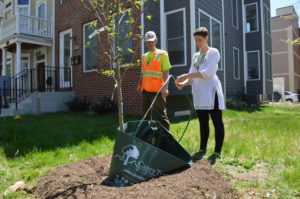 CT: What has been your biggest, best, or favorite achievement during your time at Casey Trees?
CT: What has been your biggest, best, or favorite achievement during your time at Casey Trees?
MF: As the arborist for Residential Plantings, I had the pleasure of consulting with somewhere above 1,500 homeowners across the city. The opportunity to meet some many people living in every corner of the city and talk trees with them was a distinct pleasure and a privilege.
CT: What has changed the most since you started here? (or what hasn’t changed at all?)
MF: The sheer number of trees being planted has grown quite a bit. I believe we hovered somewhere in the vicinity of 1,500 trees a year when I started and we are now breaking 3,000 trees a year. We moved from staging our trees right here at the office to having an off-site tree storage yard to accommodate the numbers. The hard work by the staff across multiple departments to accomplish this scale of tree planting has been admirable.
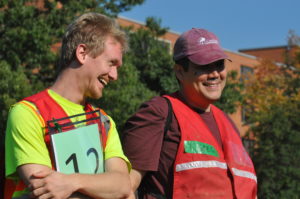 CT: Do you have any advice for future tree planting team members?
CT: Do you have any advice for future tree planting team members?
MF: This is job is as much about people about trees. The mentality that we are serving people and providing them with a resource that can serve them really helps to frame the work for me. Also, understanding the quirks and nuances of working with people and institutions is just as important as understanding how to work with the trees!
CT: What is one thing you’d like to say to the hundreds of volunteers and homeowners that you’ve worked with?
MF: I would say that I am humbled and awed by their dedication to the work. The most striking story of Casey Trees is how effectively it has nurtured a truly talented corps of lead volunteers. Every volunteer hour really makes a difference but I want to give an especially enthusiastic shout-out to all the Team Leads that devote so many of their Saturdays to this important work.
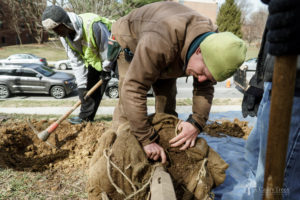 CT: Any odd/zany/downright surprising stories from a planting?
CT: Any odd/zany/downright surprising stories from a planting?
MF: I would have to say that stumbling upon one of Gallaudet University’s old ‘Rat Funeral’ burials at the bottom of a planting hole was pretty interesting. I won’t go into the details but you all should ask around about this odd and awesome tradition. [Editor’s note: It’s not as weird as you think, it’s actually pretty cool.]
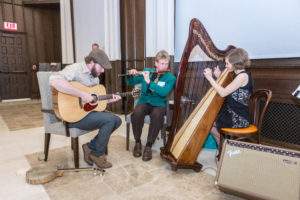 CT: If you could only bring one album to listen to on a desert island, what would it be?
CT: If you could only bring one album to listen to on a desert island, what would it be?
MF: It would probably have to be ‘Kitty Lie Over’ by Mick O’Brien and Caoimhín Ó Raghallaigh. Some may not know that one of my main hobbies playing traditional Irish music and this album has been a great inspiration and guide as I have delved deeper into this music.
CT: You’re a new addition to the crayon box, what color would you be?
MF: I’ve always found the green stripes in the bark on Striped Maple (also called Moosewood) to be super cool looking. Let’s go with ‘Moosewood Green’.
CT: Last but not least, favorite tree?
MF: I’m a pretty big fan of persimmon these days. It’s got a lot of great characteristics: Cool blocky bark; Delicious fruits (especially good when picked from the American/Asian hybrid ‘Rosseyanka’); Very dense wood that was historically used to make fifes; and to top it off it has beautiful fall foliage.
